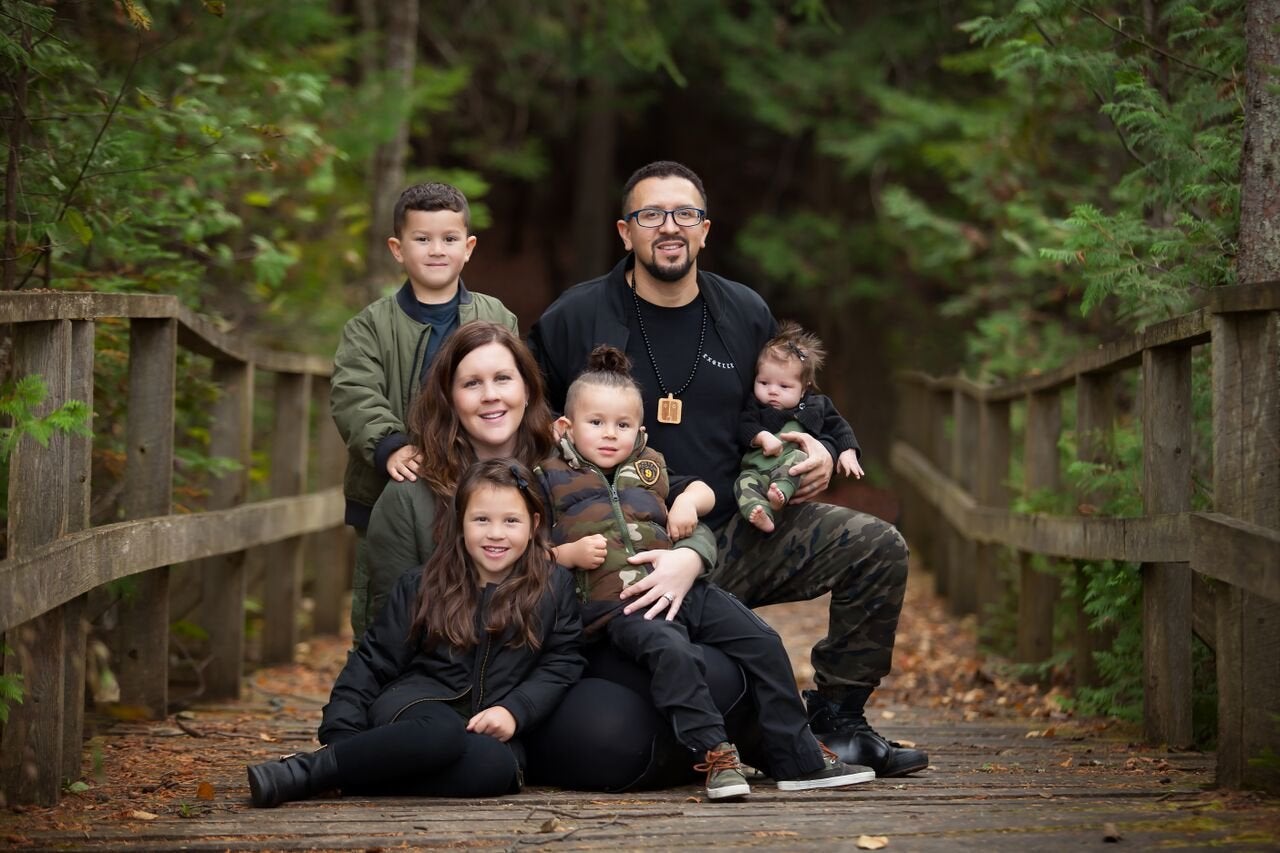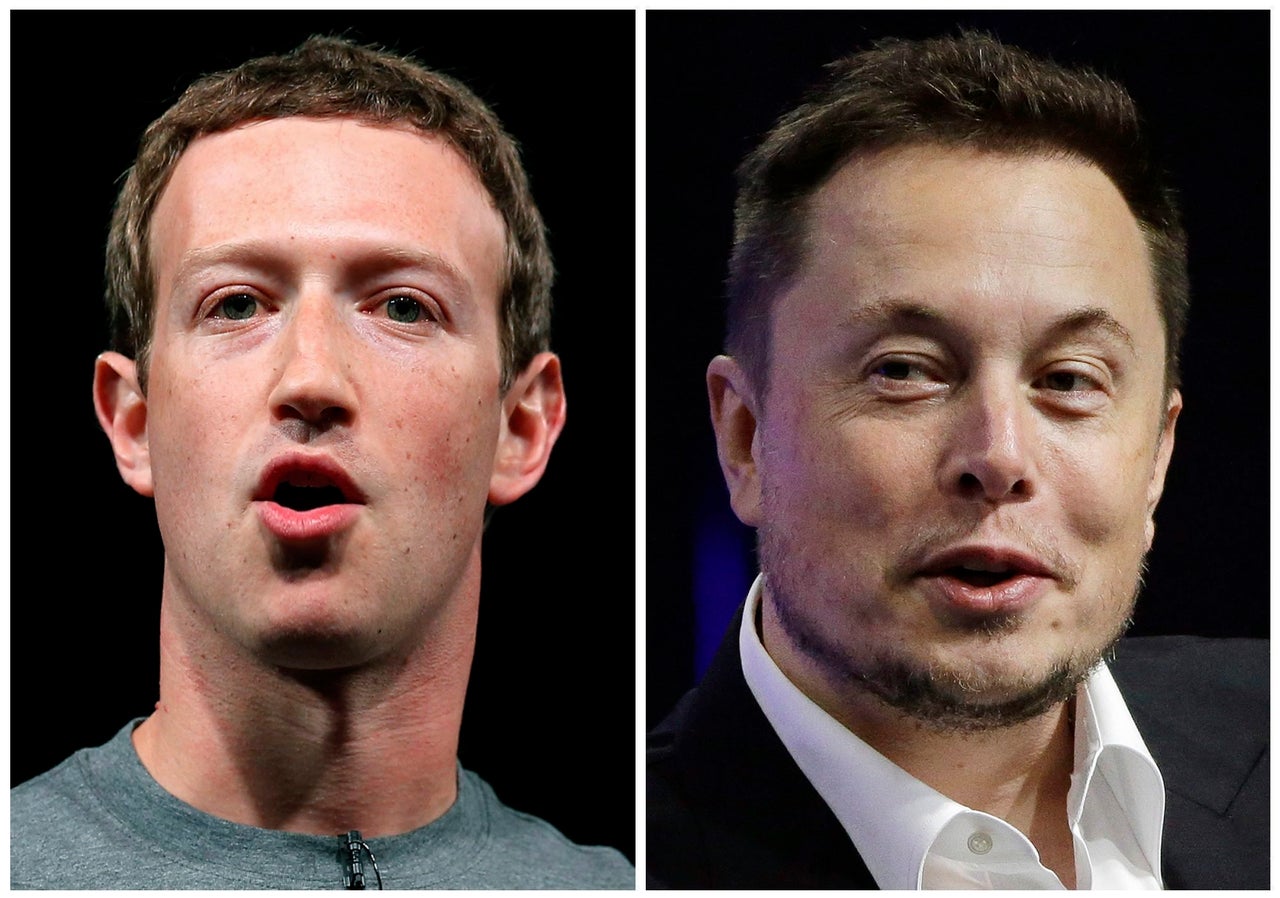Sherry Mendowegan has accomplished a lot in the past six months. The mother of two bought her first car and graduated with her high school diploma in March.
“Next is my college, post-secondary, and then hopefully I get some work,” she says. Going to college would have been out of reach for the 41-year-old just last year. But as a participant in the basic income pilot program launched by the Canadian province of Ontario, she and her husband, Dan, can now afford the tuition fees. She’ll be studying office administration at Confederation College in the city of Thunder Bay this September.
“Our life has changed,” Mendowegan says. “We’re not struggling.”

Ontario’s basic income program, launched in April 2017, is currently operating in three towns ― Thunder Bay, Lindsay and Hamilton. The scheme has enrolled more than 4,000 low-income people living on less than CA$34,000 ($29,500) individually, or CA$48,000 as a couple. This includes those who are working, in school or living on financial assistance.
For three years, single participants will receive up to CA$17,000 a year and couples will receive up to CA$24,000. Those earning any money will see their basic income amounts reduced by 50 cents for every dollar they make. Participants with disabilities are eligible for another CA$6,000 annually ― although they do need to wave goodbye to state disability support, which can work out to more money.
A third-party research team will evaluate the effects on people’s physical and mental health, food security, stress and anxiety, housing stability, education and employment. Their responses will be compared against a control group — low-income participants who won’t receive the basic income but will fill out surveys about their life and well-being.
Universal basic income, or the idea of giving people money without any conditions, is not new. But it is gaining fresh momentum globally as inequality worsens and swaths of jobs are at risk from automation and other factors. Ontario joins a handful of other places in the world to test out some sort of guaranteed basic income, including the Dutch city of Utrecht, a village in Kenya, the city of Stockton, California, and Finland, although Finland doesn’t currently have plans to extend its pilot program past its scheduled end in December.

Growing up in a northern indigenous community, Mendowegan says she wasn’t encouraged to stay in school. She dropped out when she was 15.
“I just didn’t want to go to school, I guess,” she says. But after having children, she realized the benefits of an education and returned. “I’m very glad I went back to get it. I want my kids to look up to me,” she says.
Before being accepted onto the basic income program, Mendowegan and her husband were living on money from Ontario Works, the province’s welfare program. Because she’s indigenous, she could have received funding for college from her community, but that would have been seen as “income” by the government, reducing her welfare payments.
“I wouldn’t ever have been able to afford it,” she says.
There are hefty requirements to be eligible for Ontario Works. Even though Mendowegan was completing high school and her husband was a stay-at-home parent raising their infant daughter and 12-year-old son, both had to look for work constantly and report proof of that ongoing search to the government.
“You have to hand in everything that comes to you. If my mom were to give me $40 if I was running short, I had to report that,” Mendowegan says. “I feel that I’m more in control [on basic income]. I don’t have to look up and say, ‘OK, we got this. We have to show it to somebody.’ There’s more privacy.”
For backers of the basic income, that’s one of the key advantages of the idea ― it’s a no-strings-attached benefit, making it a less intrusive and less judgmental way of delivering financial assistance.
Current welfare programs are “means-tested,” meaning government officials have to pry into the details of your life to determine whether you qualify, says Hugh Segal, the retired conservative Canadian politician who essentially designed Ontario’s basic income pilot project.
“That is stigmatizing and unproductive, whereas if there was an automatic process where people [had their incomes] topped up, and did not isolate them, that would be better,” he says.
Under Ontario’s version of the basic income, if it were implemented throughout the province, the government would use tax returns to determine who gets sent a basic income check.
Segal, a longtime advocate of the basic income, also argues the scheme will eliminate a key disincentive for low-income people to join the workforce. With traditional welfare, any money you earn is clawed back from your benefits. But under the basic income pilot program, the government lets you keep part of what you earned in the workforce, giving those on the benefit more reason to take work.
The majority of people participating in Ontario’s pilot project — about 70 percent — have jobs of some sort, according to the provincial government.

Luis and Leanna Segura, a couple living in the town of Lindsay, don’t fit the stereotype of basic income recipients. They own and run Fresh Fuell, a restaurant on the town’s main street that serves healthy food, and say the basic income scheme is already making an impact on the town.
“It’s been a big boost, even in the energy of people. It’s nice to see,” says Luis, who got his first basic income payment just before Christmas.
Two years ago, the couple sold their house and quit their jobs to take a chance on entrepreneurship. “Like any new business, it’s a struggle and a gamble,” Luis says. “It’s going great. We have great community support.”
But money was still tight. The Seguras decided to apply for basic income right before she gave birth to their youngest child. “As tight as it was, we knew it was going to get tighter,” says Luis.
Basic income has been a huge help while raising their now six-month-old baby and three older children, he says. They’re able to afford kids’ activities that would have been luxuries before. Their daughter is a competitive gymnast and their son is now learning jiujitsu.
Luis says he thinks the program has been a boon for local businesses. Since the program launched, Fresh Fuell’s customers have been spending more, he says.
“Business has been great. I wonder if it has that ripple effect here now because other people are on basic income in the community and have that little extra. … That’s a plus for everyone — for the person spending, for the person receiving.”
Basic income schemes are happening because of a recent, fundamental shift in thinking about work and inequality, says Segal, who adds: “Our economy has been creating vast wealth for people at the top and not doing the same for others.”
“A lot of thoughtful governments are beginning to ask themselves, are we dealing with the gap between rich and poor as effectively as we might, and what are the political costs of not doing so?” Segal says.
The rapid rise of automation in the workforce has created the specter of machines taking many of our existing jobs. A 2013 study from Oxford University estimated that 47 per cent of jobs in the U.S. are at risk from automation. We are facing the growing prospect that new industries and jobs will not appear quickly enough to employ all those who have become obsolete in the digital economy.
That’s certainly the concern among many of the prominent tech executives who have come out in favor of a basic income scheme — among them Facebook founder Mark Zuckerberg and Tesla and SpaceX CEO Elon Musk.

It’s also among the reasons Ontario’s Liberal Party premier, Kathleen Wynne, gives for launching the province’s basic income project.
“The realities of our uncertain economy, the technological change going on right now, the uncertainty of what work is going to look like … all of that points to the fact we need to look at everything,” Wynne tells HuffPost.
When she grew up in the 1960s and ’70s, she says, there was a lot of talk about people working less. “The three-day workweek hasn’t come to fruition; instead, we see people piecing together different jobs,” she says. “The disruption of technology that we might have expected then is actually on us now.”
But if the basic income has any chance of widespread adoption in Canada, it will have to overcome bipartisan political opposition. The right’s argument is obvious: that giving away “money for nothing” is morally objectionable.
But there is resistance from the left as well. A number of socialist thinkers have come out against it, arguing that a basic income means less incentive to pay workers a living wage.
The biggest issue with a universal basic income is cost. Ontario’s government is nowhere near estimating what a provincewide scheme would cost, but in April the Canadian Parliament’s budget watchdog estimated that if Ontario’s scheme went nationwide, it would cost CA$43 billion a year.
Proponents of the basic income say that what these studies fail to take into account are the savings government would see in other areas from a reduction in poverty.
“Poverty is the greatest predictor of hospitalization and health problems,” Segal says. He points to research by University of Manitoba professor Evelyn Forget, who is credited with rediscovering a long-forgotten basic income experiment in Dauphin, Manitoba, in the 1970s. When the town’s residents were given a “mincome” for three years, use of the publicly funded health insurance system dropped 8 percent, Forget’s research showed.
Given that Canada spent an estimated CA$242 billion on health care costs in 2017, a decrease of 8 percent nationally would amount to a savings of more than CA$19 billion on health care costs nationally, offsetting nearly half of the estimated cost of a basic income.
But many wonder whether Ontario’s basic income project can withstand the winds of political change. The province is heading toward a provincial election in June, and “there is a lot of risk” that the project could be shelved by a future government, Wynne says.
Mendowegan hopes it isn’t just seen to completion but extended beyond three years.
“I’ve got no bad reviews of it. Nothing,” she says. “It’s a huge difference in our lifestyle right now. It’s more positive, the way that we’re raising our kids now.
“When I was on Ontario Works, I did feel stressed, living month to month. With the pilot program, it’s just a little bit more, but it helps us. We can do more with our families.”
For more content and to be part of the This New World community, follow our Facebook page.
HuffPost’s This New World series is funded by Partners for a New Economy and The Kendeda Fund. All content is editorially independent, with no influence or input from the foundations. If you have an idea or tip for the editorial series, send an email to thisnewworld@huffpost.com
